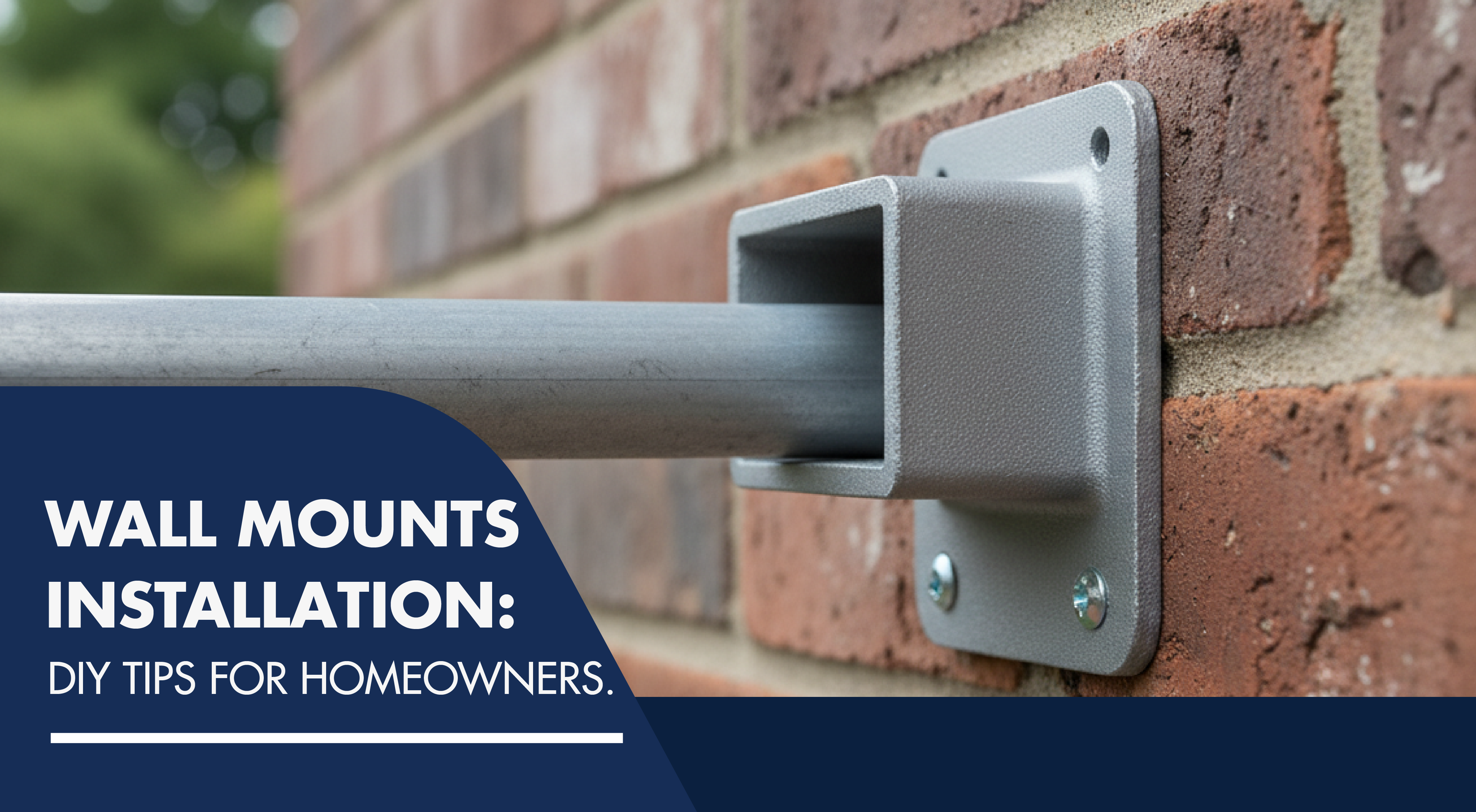There is a wide range of sizes to choose from when purchasing hinges. It does not matter if you intend to put the hinges on a door, gate, cabinet, or any other surface; you will need to select hinges that are of the appropriate size. The majority of hinges make use of a few standard measuring formats. If you refer to these measures, you will be able to establish whether or not a hinge is the appropriate size for the application you are using it for.
Door Hinges Standard Size
The majority of door hinges in residential homes have dimensions of 3.5 inches by 3.5 inches. This measurement is taken from the bottom edge of the hinge all the way up to the top end of the hinge, and then again from the outside edge to the edge when the hinge is open. A four-inch hinge is standard on exterior doors, though this is not always the case.
Factors to Affect Hinge Measurement
If you are installing a new door but are unsure which size of hinge is required, you may find this information here. They are essential to the operation of a door because they keep it supported in the door jamb and allow it to move smoothly when opening and closing.
Because hinges come in such a wide variety of sizes, it may be difficult to determine the specific measurement that is required for the hinge to work properly on your door.
The height, weight, width, and thickness of the door are some of the components that should be considered while establishing the appropriate size for the opening. Here are several factors that play a role while measuring a door hinge.
Gauge
The measurement of a hinge's thickness is referred to as its gauge. The thicker the hinge will be, the higher the gauge number. As a direct consequence of this, hinges made from high-gauge metal are often more robust than hinges made from low-gauge metal. They are able to support greater pressure while accommodating objects of a greater weight.
Length
The distance from the bottom of the leaf to the top of the leaf is known as the length of the leaf. Because it represents the height of the hinges, it is often referred to as height.
The majority of hinges are constructed with two leaves that are the same size. The leaves are compacted together to form a knuckle that has a cavity in the middle of it. After that, a pin is put into the middle of the knuckle, which serves to secure the connection between the two leads and finishes off the hinge. The height of a hinge, measured from its base to its peak, is referred to as its length.
Width
When the hinge is open, the width is measured as the distance from one end of one leaf to the other end of the opposite leaf. It is mostly determined by the dimensions of the leaf blades. The breadth of hinges will be greater for those with larger leafs compared to those with smaller leafs.
When the hinge is opened all the way, you can determine the width. When the hinge is fully opened, the distance that must be measured from the outside of one end to the outside of the other hinge must be determined. This distance denotes the breadth of the hinge.

Knuckle Length
The knuckle length is another hinge measurement that you need to be familiar with. Some individuals have the misconception that the knuckle length and the hinge length are the same things, however, this is not the case at all. The length of a hinge's knuckle is measured in terms of the length of each individual part of the knuckle.
The knuckles are made up of several different portions that function similarly to teeth. The teeth of the hinge make it possible for the leaflets to come together. The height of each individual part is what is meant by the term "knuckle length." The knuckle length of some hinges is 0.25 inches, while the knuckle length of other hinges is 0.5 inches.
Pitch
At long last, there is pitch. The breadth of a hinge's knuckle can be represented by the pitch of the hinge. If you measure the distance across the knuckle of the hinge, you will be able to determine the pitch. It is important to keep in mind, however, that pitch does not take into consideration the leafs of the hinge. The knuckle is the sole object of attention here.
How to Measure exact size of a door hinge?
Recognize the Hinge
Measurements for hinges are taken both from side to side and from top to bottom. This part should not pose too many problems. After that, you'll need to be able to differentiate between corners with a radius and corners with a square.
A corner that is square has an angle that is acute, like a square. They are more curved in order to accommodate radius corners. To determine the appropriate size of your radius corner, use a dime and a nickel. The radius of a dime is 1/4 inch, while the radius of a nickel is 5/8 inch.
Figuring Out How Big Your Door Is
The sort of door you have will determine how you should measure it. There is very little difference in the way that exterior, interior, and screen doors are measured. Taking the width measurement for a conventional door requires a tape measure and a measurement taken in the middle of the door.
Hook the end of the tape measure onto the very top of the door, and then stretch it all the way down to the very bottom. This will give you the height. The typical width of a hinged door is thirty inches, while the height is eighty inches. Simply opening the door and taking the measurement along the inner edge, which is where the lock is located, will give you the thickness.
If you need to measure the rough opening, which occurs when the wall around the door has not been completely constructed, you can determine the width by measuring from the 2x4 on the left to the one on the right. This will give you the measurement for the rough opening.
To determine the height of the door, you will measure from the top of the 2x4 to the bottom of the door. You should probably also take the dimensions of the door jamb into consideration as well.
You may be interested: How Many Hinges does a Gate Need?

Appropriate Hinge Size
Here is when the measurements of your door come into play. Even though every door is unique, you can use this as a basic guideline to help you choose one. The hinge height should be three and a half inches for doors that are 32 inches wide and 1 3/8 inches thick.
If it is up to 36 inches wider than this, then the height of that hinge needs to be increased by 4 inches. For doors with a thickness of approximately 1 34" and a width of 36", the hinge will need to be 4.5". If the width is greater than 48 inches, the hinge height should be increased to 5 inches.
This gradual improvement is maintained when the door's measurements progress from thinner to wider and then thicker. This is due to the fact that the hinges need to be of sufficient size to adequately support the weight of the door.

Positions for the Installation of Hinges
In most cases, the bottom hinge will be situated at a distance of ten inches from the door's bottom edge to the floor. It should be five inches from the jamb to the upper border of the door before the top hinge is installed. If your door has a third hinge, which are typically found in public buildings, offices, and other areas that demand heavy doors, it needs to be perfectly aligned between the top and bottom hinges in order to function properly. These hinges are typically used in locations that require heavy doors.
At FittingsPlus, we have hundreds of different door hinges available that are made of high-quality materials that will complement the style of your interior or exterior door. We provide a wide variety of metal kinds and finishes of the most common form of hinge used in homes, which is called a butt hinge. This style of hinge is called a butt hinge since it is the most frequent type of hinge.
We also carry spring hinges, which are a type of hinge that allows your door to close by itself. Strap hinges are typically utilised for outside structures like sheds and garages since their leaf plates remain fully visible even when the door is closed. Doors that have been specially built or are particularly hefty may require pivot hinges.
To Conclude
As mentioned, the two dimensions of the hinge that are of relevance to us are the height of the leaf, also known as the hinge, and the total width of the hinge, which is measured with the hinge in the completely opened position.
The required height of the hinge is determined by the thickness of the door as well as the width of the door. Because it has an effect on how heavy the door is, the width of the door is an essential component to consider. In order to maintain its stability, a wider door will require additional load-bearing support.
At FittingsPlus, we don’t just offer a wide selection of high-quality hinges—we ensure you get the best shopping experience. Enjoy fast shipping, reliable warranties, and expert customer support to help you choose the right hinge for your needs. Whether you're working on a home improvement project or a large-scale installation, our durable and competitively priced products make the decision easy. Shop with confidence at FittingsPlus and get the perfect fit every time.






